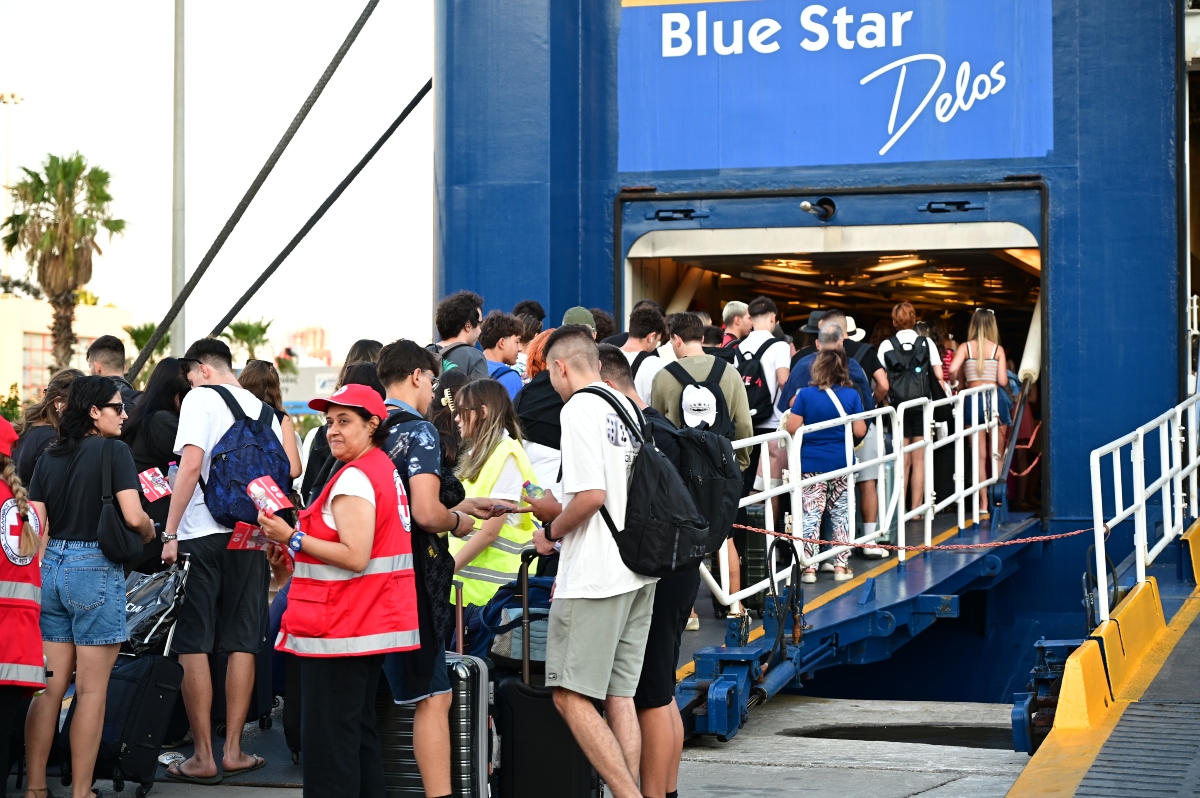More than 1.5 million passengers departed from the three main ports of Attica (Piraeus, Rafina, Lavrio) for the islands of the Saronic Gulf and the Aegean between July 1st and August 10th, marking a slight increase compared to the same period in 2024, according to data from the Ministry of Shipping shared with ot.gr.
While this rise does not reflect a “massive exodus,” it highlights a notable trend: a significant portion of the increase is driven by the growing popularity of the Saronic islands, where travel costs are considerably lower due to shorter distances.
Traffic Highlights
- From 1/7 to 10/8 in 2025, a total of 1,554,287 passengers traveled from Piraeus, Lavrio, and Rafina—up from 1,494,555 during the same period in 2024. This marks a 3.99% increase, or +59,732 passengers overall.
- The Saronic Gulf islands led this rise, with +34,664 passengers, a notable increase of 11.65%.
- From Piraeus to other island destinations (excluding the Saronic Gulf), there were +19,282 passengers, an increase of 2.25%, mainly toward the Cyclades.
- Passenger numbers also grew from Lavrio and Rafina, by 2.87% and 1.21% respectively—roughly 3,000 more passengers per port.
Seasonal Trends & Long-Term Outlook
Passenger ferry traffic in Greece is highly seasonal, peaking between July and September and falling significantly between November and February, according to XRTC’s annual report.
In contrast, freight traffic (trucks) remains relatively steady year-round, showing minimal seasonality.
Despite the summer rise, passenger traffic in the first half of 2025 was down by 3%. If the upward trend continues through the rest of the summer, 2025 may close with only marginal growth, continuing a pattern of slowing post-pandemic recovery.
According to ELSTAT data cited by XRTC:
- Passenger traffic rose by 4% in 2024, compared to a 7% rise in 2023 (relative to 2022).
- Vehicle traffic (cars and trucks combined) grew by 3% in 2024, compared to 4% in 2023.
The Challenges Facing the Ferry Sector
The Greek ferry network serves around 120 inhabited islands, of which 89 are accessible only by sea (just 26 have airports). The sector also supports the transport of 9 million tons of goods annually, covering 82% of the islands’ supply chain and supporting agriculture, manufacturing, and commerce.
However, the aging ferry fleet presents major challenges:
- The current fleet includes 153 ships operated by 33 companies, serving 115 islands.
- The average ship age is 30 years, with only 17% of vessels under 20 years old.
Key issues for ferry operators include:
- Fleet modernization
- Funding for green ships
- Compliance with EU environmental regulations
- Rising operational costs
- Mandatory participation in the Emissions Trading System (ETS)
The smooth operation of the ferry system is not just a transportation issue—it’s vital for the social and economic cohesion of island communities across Greece.
Source: pagenews.gr
